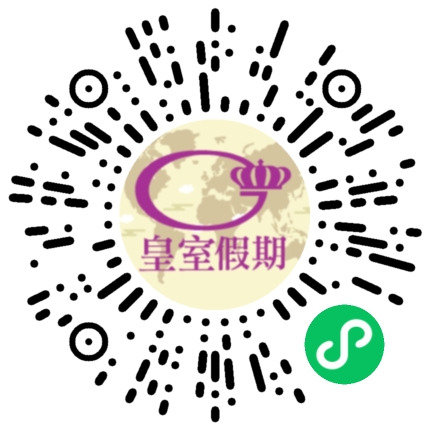8-Day Malaysia Exotic Tour
Visit Penang, Ipoh, Kuala Lumpur
US Office:
US West office:877-895-7988
US East office:877-825-7988
Email:webagent@GrandHolidays.com
| Region | Southeast Asia - Thailand, Singapore, Malaysia | --> -->
| Tour Code | APK8 |
| Departure Dates | See Calendar below |
|
per person $ 899 Up |
|
| Room type | per person |

※Note: Tour names and descriptions are for reference only. The actual itinerary shall prevail.
Highlights
- Explore the Best of Malaysia: Discover the distinctive blend of diverse cultures, historical landmarks, and vibrant cityscapes of Penang, Ipoh, and Kuala Lumpur.
- Penang, an iconic city enriched with arts, sunshine and beaches: Explore George Town’s famous historical attractions and most of its UNESCO World Heritage Sites on a traditional trishaw ride, admire the local street art at Art Street, and take the cable car to the top of Penang Hill for panoramic view of the stunning scenery of Penang Island
- Ipoh, a historic city with rich colonial charm: Wander this picturesque town and visit the colonial buildings and the century-old Victoria-style Railway Station, and explore Matang Mangrove Forest Reserve, the largest mangrove forest in Malaysia, and historic Charcoal Factory.
- Kuala Lumpur, the most bustling and vibrant capital city: Visit iconic landmarks, such as Petronas Twin Towers, Buta Caves, etc.…. and visit the lively Chinatown and Kwai Chai Hong, the revitalizing old district with stunning street mural arts.
- Attentive planned tour route and itinerary starting from Penang along the way to Ipoh and Kuala Lumpur for your best travel experience.
- Accommodate at convenient 4-star upscale hotels with daily breakfast. Same hotels for 2 nights in each city for your utmost comfort.
- Include 4 lunches and 1 dinner; taste the authentic Malay food: Nyonya cuisine, Penang prawn noodles, Ipoh bean sprout chicken, Bak Kut Teh (herbal pork bone soup), Malaysian Char Siu…
- Visit three iconic night markets – Penang’s Gurney Drive Hawker Centre, Kuala Lumpur’s Jalan Alor Night Market and Petaling Street Market, and sample hundreds of local street foods and fresh tropical fruits.
- Experienced and professional bilingual tour leader offering attentive and inviting services.
George Town (Heritage Trishaw Ride): George Town, the capital of Penang, was once a marine fuel station and a trade centre for Indian spices and Chinese tea, cotton and other commodities, so it presents rich blend of British, Moorish, Chinese and Indian cultures. Taking the traditional trishaw ride exploring this multi-cultural city’s significant landmarks, historical ruins and UNESCO World Heritage Sites, allow you to discover the city in depth. Art Street: In 2012, Penang city government implemented a project called “Mirrors George Town”, inviting some artists to paint many interesting 3D incorporated murals on various street walls in the designated reserved area, which have subsequently become one of the cultural landmarks of the city as well as a must-visit attraction for tourists. Among them, the three most popular works by Lithuanian-born artist Ernest Zacharevic – “Children on Bicycle”, “Boy on Motorcycle” and “Boy on Chair” are not to be missed. Nearby there are also some redeveloped ancient residences, cafés, ice cream shop, souvenir shops… Strolling and cycling there are definitely enjoyable. Clan Jetties: Located at the northeast waterfront of Penang, Clan Jetties are some old floating villages where the first generation of Chinese immigrants settled in Penang. The jetties are named after the residents’ respective common surname. There were originally 9 jetties, but 3 of them have been demolished due to decay by water erosion, aging, etc. Listed as UNESCO World Heritage Site, the surviving 6 jetties perfectly unveil the hardship of the early Chinese immigrants and the traditional water life. The Blue Mansion: Originally a 130-year-old Chinese-style heritage mansion, which was left by the Chinese industrialist Cheong Fatt Tze, who spent most of his life in Malaysia and was once regarded as the richest man there to his descendants. To reflect its glory and grandeur, Cheong kept an eye for every detail and only used the best materials of that time, like the artisans hired from Southern China and the building materials imported from as far as Scotland. The architecture presents his passions and love of Chinese culture and tradition. Blue Mansion is now an entertainment complex offering an 18-suites boutique hotel, restaurants, cafes and bar, and daily guided tours to visitors. Love Lane: Dating back to 1803, this narrow historic street was once known for its brothels. Many of the Chinese-style traditional shops have been transformed to boutique hotels, hostels, hipster cafes and bars, attracting many locals and tourists for sightseeing and nightlife. Penang Hill: Standing at its peak at 830 meters above the sea level, visitors can admire the panoramic view of the Penang Island. Also located in its undeveloped rainforest conservation area is the world-class eco-tourism attraction “The Habitant”. With facilities including natural hiking trails, canopy trail, rainforest suspension bridge, cafes, etc., it aims at raising awareness on the significance of diverse and delicate ecosystems.
Kuala Sepetang: Formerly known as “Port Weld”, this traditional Chinese fishing village is an important port for connection with the outside world in the British colonial era. You will see many tall wooden houses and fishing boats along the river banks. It also has reputation of “Clam Capital” due to its abundant production of clam. Charcoal Factory: Mangrove is the raw material for making charcoal, and the vast mangrove forest offers plentiful material supply to the charcoal industry in Kuala Sepetang. Most of the charcoal produced is supplied to Japan, and only a small portion is sold locally. Matang Mangrove Forest Reserve: The largest mangrove forest in Malaysia, offering buffer protection to Kuala Sepetang against the tsunami in 2004. It provides excellent ecological habitat to different species of animals and plants. The visitor area offers the public an opportunity to gain knowledge on the ecology of the mangroves and the importance of wetland ecological environment. Visitors can also take a boat ride for a close touch to the nature.
Perak Cave Temple: One of the most gorgeous attractions in Ipoh, this temple is built in a cave in 1926 and renowned for its stunning architecture. Climbing up 358 stairs, you will see 40-feet tall Golden Buddha statue surrounded by four guardian deities called goddesses sitting in the main alter. There are also colorful murals depicting events and characters from the Chinese folklore and Buddhist scriptures. Railway Station: A mixed Moorish and Victorian structure, which together with Ipoh Municipal Building, the massive white neoclassical building across the Railway Station, conveys the affluence of the city. Concubine Lane: Located in the Old Town area, this revitalized historic alley is one of the must-visit attractions in Ipoh. There are many stories behind the origin of its name. The most popular one is the local tycoon Yao Tet Shin gave his mistress (“concubine” in Cantonese) a house there to live in. In the alley there are more than 20 two-storey century-old houses with faded wooden sash windows and old exterior walls, retaining its unique heritage and old-world charm, plus the traditional stalls, nostalgic signboards, mural arts, handcraft market, cafes and bars, etc… thus attracting many tourists and hipsters wandering around every day! Many famous movies such as “Lust, Caution”, “After This Our Exile” and “Anna and the King” have filmed here.
[*You are required to cover up (ladies should wear a headscarf) upon entering the Putra Mosque as a sign of respect.] Putra Mosque: Named after Malaysia’s first Prime Minister, the pink-domed Purta Mosque was constructed in 1999 with rose-tinted granite and can accommodate 15,000 worshippers at a time. It integrates Arab-Islamic architectural designs combined with the skills of local craftsmanship inspired by Muslim Persia during the Safavid period. It is undoubtedly one of the most distinctive landmarks in Putrajaya. Millennium Monument: Standing in a 25-hectare park, this 68m-tall national monument is made of solid metal and is shaped like an obelisk with etchings denoting important periods and milestones in the nation's history. At night, it also serves as a beacon projecting strong light to guide the cruise boats.
Merdeka Square: The usual venue for the annual Independence Day Parade. It witnessed the independence of Malaysia with its national flag being raised for the first time on August 30, 1957. The 95-metre-high flagpole at the southern of the Square is one of the tallest in the world. Batu Caves: A limestone hill with a series of caves and temples, it is one of the most famous Hindu shrines outside of India and is the major venue of Thaipusam celebrations in Malaysia. Climb up 272 concrete steps to reach the largest cave called Temple Cave, with its ceiling over 100 meters high, it also holds ornately decorated Hindu shrines. Kwai Chai Hong: Located in the heart of Kuala Lumpur’s Chinatown, this characteristic laneway was once a prosperous economic centre and major settlement point of Chinese immigrants. It was however gradually abandoned with changes of time. In late 2018, some of the heritage buildings were restored and revitalized with addition of several interactive murals depicting life on the lane back in the 1960s, transforming this alley into a trendy space and hotspot to tourists.

 Instant Conversation
Instant Conversation





